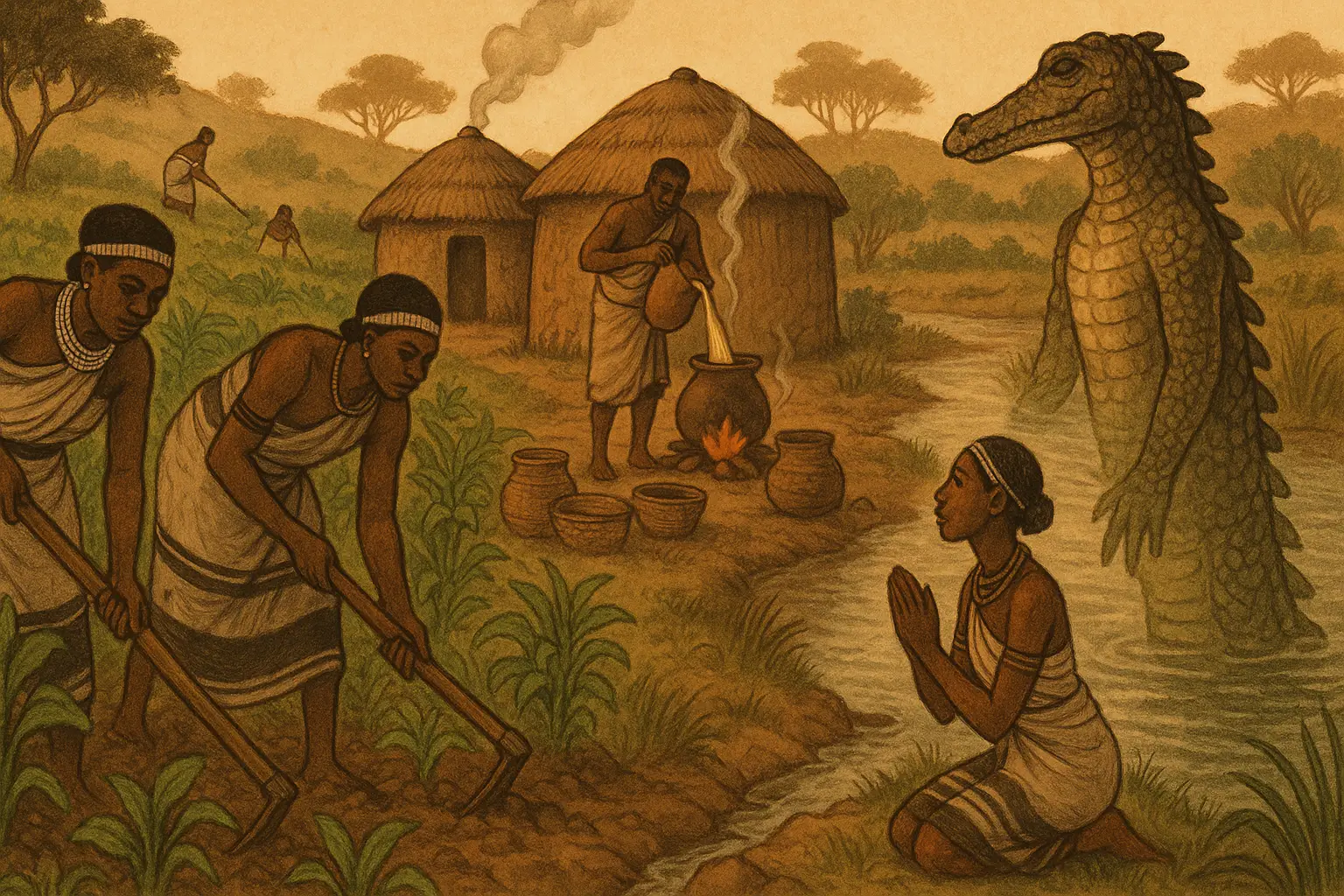Long, Long Ago…
Long, long ago, before iron pots shone in the villages and before the plough sang through the soil, the Amaxhosa people lived close to the earth and to their cattle. The sun rose over the hills like a golden drum, and the smoke of morning fires drifted from round huts that rested upon the land as quietly as stones beside a river.
Each family had its place, given by the chief and guarded by custom. The earth was sacred. A man’s field was his so long as his hands worked it, so long as his wives and daughters planted the seed and kept the weeds away. When a field was left alone for too long, it was taken back by the land, for no one owned the earth—it was a gift shared by all. The cattle roamed the common pastures, their bells ringing softly as they fed.
The Food of Life
In those days, the people loved amasi, the sour milk that gave them strength. When milk was drawn from the cow, it was poured into a skin bag and hung in the shade. There it rested and turned thick, white, and sharp to the tongue. Only the master of the homestead might touch the milk-sack, and when he poured it for his household, he always left a little behind to keep the life of the milk alive.
Amasi was their food and drink. It cooled them in the heat, filled their bellies on long days, and gave them health. Even travelers from other lands, when they tasted it, smiled and said it was good.
Women of the Soil
It was the women who made the land fruitful. From dawn till sunset they worked the fields, their lkùba—the heavy hoe of wood and iron—flashing in the light. They sang as they dug, their songs rising with the dust and the smell of the soil. The men tended cattle or built the huts, but it was the women who planted life into the ground.
Their tools were simple yet strong. The lkùba had a sharp spike that fitted into the club of a handle. Though clumsy to strangers’ eyes, it was trusted by the women who wielded it, for it had broken the soil of their ancestors before them.
Baskets and Hearths
The Amaxhosa were skillful with their hands. They wove baskets called ltungoa so tightly that water could not pass through. In them, they milked the cows and carried the gifts of the earth. They never dyed their reeds nor sought to decorate them, for the beauty of their craft was in its strength.
Inside the huts, mats were spread on the floor and used as dishes for food. The fireplace stood in the center, a circle of raised clay upon the smooth floor made from the earth of the ant-hill. Around that fire the people sat and slept. The smoke rose through the single opening that served as door, window, and chimney. The back of the hut was used as a storeroom, where jars and baskets stood in silence, waiting for use.
Of Pots and Change
In the days before the white men came, the people made their own pots from the earth. The women shaped the clay and burned it until it was strong and black. But when traders arrived with iron pots and wooden barrels, the old jars began to disappear. The potter’s art, once a proud skill, slowly faded away like smoke from the hearth when the wind turns.
The Tale of the River Spirit
And in those times, people spoke of spirits—beings that lived beneath the water and called out to the hearts of men. They told of a creature that looked like a crocodile but was not one. It had the heart of a man trapped by witchcraft, forced to live as a beast.
The elders said the Amaxhosa came from lands to the northeast, where real crocodiles lived in the rivers. When they left that land, they carried the stories with them, and from those stories was born the tale of the water-spirit.
It was said that a young woman once went to the river and met the creature. Others feared it, but she did not. Day by day, she brought it food and spoke to it softly. One evening, as the sun bled into the water, she reached out her hand and touched its face. Her tears fell upon its scales, and the spell was broken. The crocodile vanished, and in its place stood a man, his eyes bright with gratitude.
They say she freed him through her goodness and her love, for true hearts have power over darkness. The people remembered that story, and they told it by the fire when the night was deep, to remind their children that love, courage, and purity of heart can conquer even the strongest curse.
And So…
So it was in the days of old — when milk soured sweetly in the skin bag, when women’s songs rose from the fields, when clay pots cooled beside the fire, and when the spirits of river and wind walked close among the people. The land, the cattle, the hearth, and the heart — these were the treasures of the Amaxhosa, and they live still in the stories that never die.
